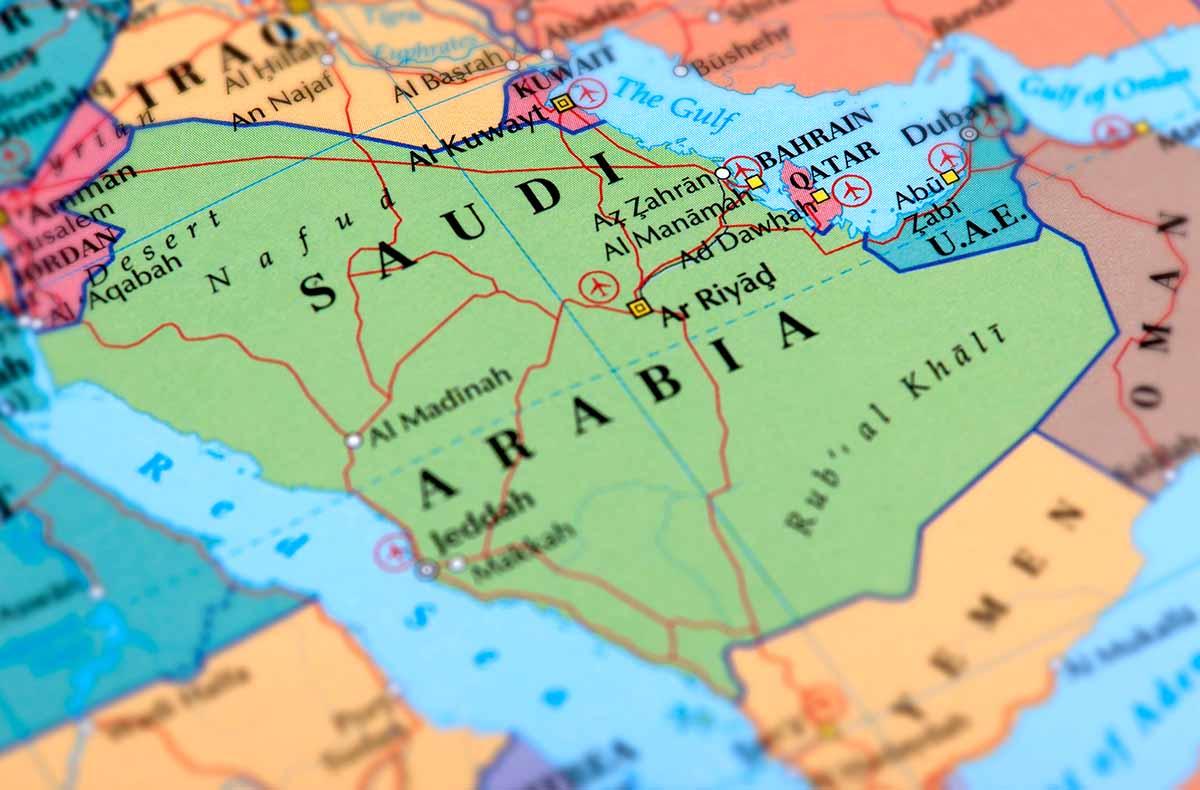
As Saudi Arabia welcomed back hostages taken by the Houthis after a mass prisoner exchange that saw 104 members of the movement return to Yemen, the international community celebrated what was largely described as a comprehensive peace deal and normalization of relations between Riyadh and Sana’a (the former capital of Yemen, captured by the Houthis in the course of the civil war). The reality is far more complicated and celebrations of a lasting peace accord may be premature.
The history between Saudi Arabia and the Houthis—the radicalized Zaydi family which now leads the Ansar Allah party and political movement in the North of Yemen—is fraught. During the Cold War, as the Kingdom joined the United States and other allies to counter Communism, the Houthi family became strong allies of the Saudis against the Soviet-backed Egyptian entry into Yemen. They also combined against the splintered but largely socialist and communist-oriented South, where most of Yemen’s natural resources are located. However, the alliance did not last.
By the end of the late 1980s and early 1990s, the Houthi family leadership was involved in organized crime schemes and smuggling weapons across the border with Oman. Senior members increasingly pivoted towards Iran and Khomeinism. Iran, weakened by the eight years of war in Iraq, was in no position to take on additional battles for the exportation of the Islamic Revolution. However, it sponsored some of the weapons and training for the Houthis.
Over time, the ideological realignment of the Ansar Allah movement became much stronger. This was fueled by the marginalization of the family and its allies as a religious minority. It was also a reaction to the general corruption inside the country under then-President Saleh, who reportedly stole approximately $60 billion from the Treasury, which was ignored by Yemen’s leading patron, Saudi Arabia.
Iran then increased investment into the training and indoctrination of the family and its network. This history is important because while the Houthis had some legitimate civil rights grievances against the government, over time, they turned into militias, first partnering with and eventually being co-opted as proxies by the Islamic Republic. Houthi leaders visited Iran and their fighters and operatives were trained by Hezbollah and Islamic Revolutionary Guards Corps contingents to create a force that would serve the same function as Iran’s surrogates in local countries in exchange for access to power, funding and weapons.
Houthi indoctrination harkened back to the Islamist roots of the movement, eventually becoming exclusivist and obsessed with the dominance of the Hashemite families at the expense of all other Yemenis. The radicalized party advocated a restrictive domestic system similar to Iran and Afghanistan under the Taliban, one not too different from the ISIS-led “Caliphate.” As the increasingly sophisticated parties took advantage of family ties, intermarrying with other northerners and waging campaigns for the control of resources in the South, Iran sought to weaponize the movement to clear its path to the Saudi border. The main goal was physical access to the Two Holy Mosques. Iran advanced its quest for the symbols of religious leadership in the region through the ideological realignment in support of the Houthis, who claimed descent from Prophet Muhammad (despite actually tracing their roots back to Iran, rather than Arabia.)
The Houthis came to wage numerous brief insurgencies against the unified Yemen government, becoming better fighters over time and learning the technique of planting mines all the way to Saudi borders at the expense of civilian lives. By the time civil war broke out in 2014, the Houthis had become a far more widespread, cohesive, Iran-backed force to be reckoned with. A year later, the exiled legitimate Yemen government requested Saudi assistance in putting down the bloody rebellion. The Arab Coalition, consisting mostly of Saudi and Emirati forces, entered the picture to help liberate Yemen from the Iran-backed uprising. The Saudis coordinated their moves with U.S. and other Western intelligence agencies. The U.S. was involved in countering ISIS and Al Qaeda, which took advantage of the chaos in Yemen.
The Houthis, meanwhile, ignoring diplomatic outreach and international norms, took hold of huge swaths of Yemen and mirrored Iranian governance. They essentially erased women from public spaces, imposed a restrictive guardianship system, abducted or lured children into the military and attacked and starved civilians into compliance. They also tortured prisoners, including journalists, imposed tribal discrimination, raided hospitals and clinics, and used civilians and civilian infrastructure as human shields, similar to Hezbollah and Hamas, to enhance outrage against the Arab Coalition’s role in the war. They have violated numerous ceasefire agreements and ignored calls for comprehensive peace. The latest agreement is, in reality, no different from all past attempts.
Saudi Arabia was not able to get the Houthis to the table to discuss a comprehensive peace plan because of unreasonable demands from the leadership, even with mediation from Iran-friendly Oman. Those demands have grown more incredible over time.
As a basis for lasting peace, the Houthis demanded the following three conditions, according to social media discussions and Yemeni sources: complete territorial control of all of Yemen (despite public comments to the contrary) rather than participation in the legitimate government; a doubling of their financial demands from $50 billion in reparations from the Saudis to $100 billion; and an insistence on a public apology, preferably from Crown Prince Mohammed bin Salman, a condition particularly humiliating and unacceptable to the Saudi side.
Indeed, the Houthis official ambition is “to govern whole Yemen, and external anti-imperialist movements against the United States, Israel, and Saudi Arabia.” Their double speech in front of the cameras should not fool anyone. In fact, they have doubled down on these demands during the talks, which the Saudis are too embarrassed to admit to the mainstream media.
Despite extensive facilitation of dialogue by the Al-Islah (Muslim Brotherhood) contingent in Yemen and more Iran-friendly pro-Muslim Brotherhood “Old Guard” diplomats in Saudi Arabia, the plan to conclude a ceasefire until December 2023, to extend and expand the diplomatic framework and to reopen oil exports to KSA has failed.
The terms and conditions of this supposedly comprehensive plan have not been announced anywhere in the media because nothing has been settled. All the articles discussing the agreement have been left deliberately vague because the Houthis were not amenable even to settling the specific date for extending the truce. None of the Houthi leadership has signed off on any agreement finalizing even a ceasefire, which means they are not under any obligations to respect the ceasefire and can attack Saudi Arabia at any time.
So far, a necessary separate peace accord with the Yemeni government has not been negotiated and cannot take place until the Saudis finalize the settlement of their differences with the Houthis. This puts in doubt the very premise of Saudi normalization with Iran, which was predicated on the Kingdom’s chief security concern.
There were hopes that Iran and China would guarantee a peace deal that would bring the Saudis out of the war and would prevent the Houthis from launching any more attacks. However, neither country played a role in the latest mediation round which led to the prisoner exchange—but not the hoped-for agreement. Iran has publicly agreed to curb support for the Houthis, but in reality this means nothing.
First, the Houthis have factories for manufacturing long-range missiles and drones and do not necessarily need to import more weapons. Second, there is no evidence that any of the support mechanisms have been stopped or dismantled. Third, ideologically, Houthi fanaticism is indistinguishable from Khomeinism and, regardless of overt public gestures, is structured to advance similar religious and political aims. Therefore, it is not clear what KSA has actually achieved as a result of these agreements in terms of its own security agenda.

